Inscrutable Islands
- Also in TR Print Edition
- February 1, 2024
- 0
- 19 minutes read
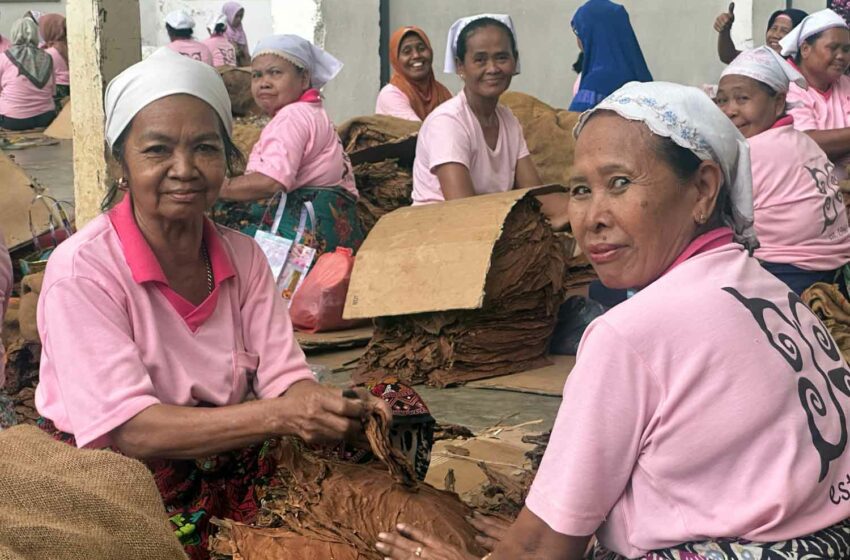

Home to an infinite number of tobacco varieties, Indonesia is among the world’s most diverse leaf origins.
By Taco Tuinstra
Forget Zimbabwe. Forget Brazil. If you want to understand Indonesian leaf tobacco, you may gain more insights by studying at the Hogwarts School of Witchcraft and Wizardry, the fictional magical boarding school in J.K. Rowling’s Harry Potter series, where nothing is what it seems. At least, that was the advice one aspiring leaf trader received upon arrival in the archipelago. His mentor was joking, of course, but the analogy isn’t entirely frivolous: The baffling Indonesian market is not the easiest place to start your career in leaf tobacco. Unraveling its mysteries takes time and dedication.
In 2022, Indonesia’s growers harvested 225.58 million kg of leaf, according to the Ministry of Agriculture, but it’s not the volume that is likely to confound the trainee. Rather, it’s the seemingly endless variety of tobaccos. Whereas the novice in Zimbabwe or Brazil will be learning about one or two internationally recognized tobacco types, his counterpart in Indonesia will have to memorize a bewildering list of local names and regional variations, many of them unique to the island nation.
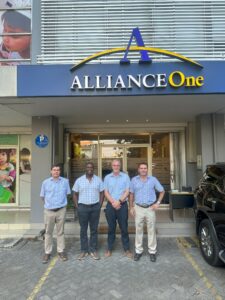
“You may have one seed variety that’s cured, grown and handled under very similar practices—but if it’s from a different area, it will have a different name,” explains Michael Green, country manager at Alliance One International (AOI), which procures 17 different tobacco varieties across Java, Madura and Lombok. Likewise, a seed planted on one side of a mountain will yield a very different tobacco than its identical counterpart sown on the other side.
That may have something to do with Indonesia’s size and topographical variety. Sprawling across three time zones and at least 17,000 islands, the country boasts majestic highlands, lush rainforests and barren volcanic landscapes, among other features. Projected onto a map of the United States, Indonesia’s extremities would extend 1,000 km from the mainland into the Pacific Ocean and the Atlantic Ocean, respectively.
Yet leaf tobacco production is concentrated in a relatively small region of this vast nation: Flue-cured Virginia on the islands of Lombok and Bali, burley in the Lumajang regency of East Java and dark fire-cured tobaccos in Central Java’s Klaten and Boyalali regencies. In addition, there are countless sun-cured varieties, which are typically named after the region where they are grown. Prominent sun-cured tobaccos include Jatim and Kasturi. Many of these are used to manufacture Indonesian clove cigarettes (kretek), although Kasturi is also exported to the European Union and the United States, where it is used in chewing tobaccos.

Among foreign tobacco buyers, Indonesia has historically been known for the dark air-cured tobaccos cultivated in East Java. With a volume of 8 million kg in a good year, the largest of these is Besuki Na Oogst (NO), which means “late harvest” in Dutch, the language of Indonesia’s former colonial rulers. Besuki NO is widely employed in machine-made cigars as well as in the bobbins used in the manufacturing of such cigars.
In addition, there is Besuki Tembakau Bawah Naungan (TBN), or “tobacco under sheet,” in Bahasa Indonesia, the country’s lingua franca. This plant was developed in the 1970s and 1980s and is grown under shade for cigar wrappers. The reduced exposure to direct sunlight results in thinner and more elastic leaves, which not only facilitates handling but also contributes to a smoother smoking experience. Shade-grown tobaccos are typically more uniform in appearance than sun-grown varieties, with fewer blemishes and imperfections—and thus highly valued by premium cigar manufacturers. A crossbreed of the Besuki and Connecticut styles, TBN is among the world’s most expensive wrappers on the market today.
Indonesian dark air-cured tobaccos also include Vorstenlanden and Sumatra. Interestingly, the famous Sumatra cigar wrappers that were originally derived from seeds native to the eponymous Indonesian island are now cultivated primarily in Central America.
Indonesia’s largest tobacco product by far, however, is Rajangan cut rag, which accounts for up to 70 percent of the country’s total leaf production volume. Rajangan is widely deployed in kretek production, with individual varieties named after the region where they are produced. Unlike the cut rag produced elsewhere, Rajangan tobaccos are cut while they are still green and then dried in direct sunlight on mats. Ranging in color from lemon to brown, this product may remind some Western visitors of the straw used to decorate Easter baskets.
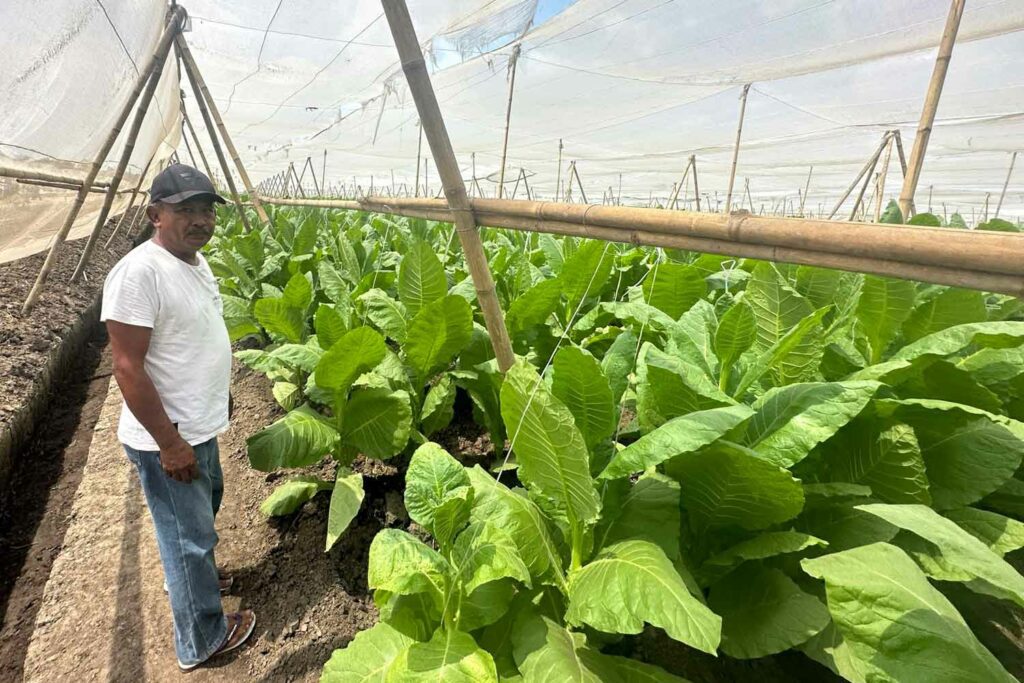
Multiple Players
Contrary to the situation in many other leaf origins, where growers cultivate tobacco primarily for exports, at least 70 percent of the tobacco planted in Indonesia is smoked locally. With an annual consumption of nearly 300 billion sticks, according to TMA, Indonesia is not only one of the world’s largest cigarette markets, but it is also a unique place in terms of taste preferences, with kreteks outselling white cigarettes by a factor of 10. Despite the efforts of some multinationals to steer Indonesian smokers toward “international” cigarettes, the transition from dark tobaccos to blond tobaccos that occurred in southern Europe and elsewhere never took place in the archipelago.
Numerous leaf merchants, serving both domestic and foreign customers, operate throughout the archipelago. Aside from AOI, whose footprint stretches from Central Java to Lombok and includes a processing factory in Mojokerto, there are well-known players such as Universal (known as Universal Tempu Rejo locally), Premium Tobacco and Hail & Cotton, which goes by the name Mayangsari in Indonesia. In addition, the country has multiple home-grown players, including Sadhana and Mangli Djaya Raya (MDR).
Sadhana was established by former Sampoerna executives after the 2004 sale of their company to Philip Morris International. The leaf dealer exclusively supplies Sampoerna, which has evolved into the cigarette market leader since becoming part of the multinational. MDR is a privately owned Indonesian operator, established in 1960 and acquired in 2007 by Njoto Permadi. Today, the business is run by his son, Christian A. Njoto Njoo. MDR is the only company with a redrying facility in Jember, the heart of Indonesia’s dark air-cured tobacco business in East Java. Since 2009, MDR has also had a dedicated cigar business, manufacturing products for both the domestic market and the international market.

Steeped in Tradition
Tobacco cultivation is a massive, labor-intensive business in Indonesia, involving as many as half a million growers. Averaging between 0.25 ha and 0.5 ha, plots tend to be small and scattered. Farmers either grow under contract with one of the leaf merchants or sell their produce on the open market through middlemen. Contract growing provides buyers with a high degree of oversight of the production process. By providing their farmers with the appropriate crop protection agents (CPAs), personal protective equipment, inputs and knowledge of good agricultural practices, the leaf merchants ensure that tobacco meets both their own standards and those of their customers, which sometimes exceed those set by the Indonesian government. For example, some CPAs still permitted in Indonesia are no longer accepted by many international cigarette manufacturers.
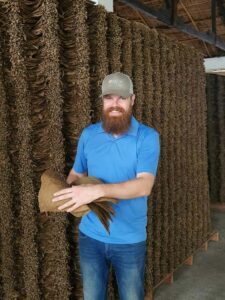
Farmers who grow tobacco under contract benefit not only from greater yields, better quality and consistent prices but also from the certainty that they will sell their crop. Contracting also helps growers cope with adverse events such as crop failures and natural disasters. For example, after the Mount Raung volcano erupted in 2015 and covered much of the region’s tobacco in ash, Mayangsari had to take on the additional expense of washing tobacco—but it kept buying. Farmers selling in the free market, by contrast, were stuck with their ash-covered crops because many middlemen decided to take a break that year. “We support our contracted growers in both good times and bad times,” says Jasper Kuitems, leaf manager for Mayangsari.
Despite the advantages of working with growers directly, most buyers also purchase leaf on the open market. Not only is contract growing an expensive and big logistical undertaking, but it also represents competition for the middlemen, who represent a powerful constituency in Indonesia. Buying through both channels allows merchants to supplement their contracted volumes and helps maintain social harmony in their communities.
Tobacco is a notoriously demanding crop, requiring more human interventions throughout the growing cycle than, say, corn or rice. Nonetheless, it remains a solid cash crop for both contract growers and free-market farmers in Indonesia, as evidenced by the fact that landlords charge tobacco growers higher rents than producers of other crops. “If done correctly, tobacco offers an attractive return on investment,” says Green. Of course, everything depends on supply and demand. When prices are poor, farmers may look at alternative crops; in good times, they may plant extra tobacco.
Demand has been strong in recent years, particularly for Indonesia’s dark air-cured tobaccos. According to Martijn Schaap, acting country manager for Universal Tempu Rejo, this is partly a result of two consecutive poor Besuki NO harvests and partly due to cigar makers’ reduced inventories in the wake of the Covid-19 pandemic. The growing popularity of cigar smoking in China has, too, boosted demand for Indonesian dark air-cured leaf.
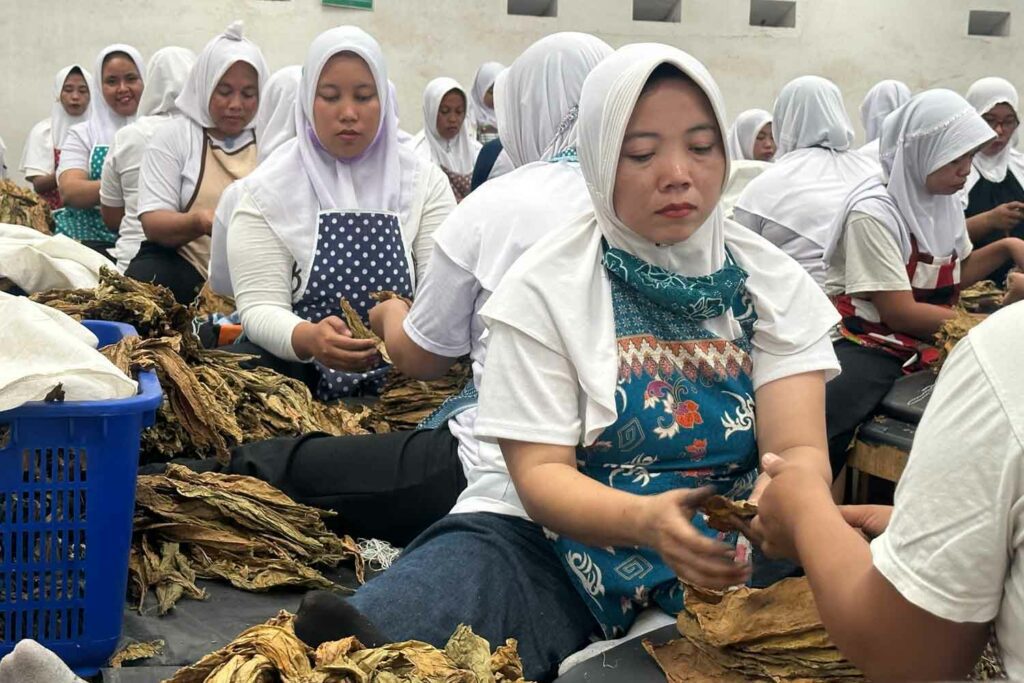
Post-Harvest
The Indonesian tobacco industry’s contribution to employment is not limited to the field. A significant share of kretek cigarettes continues to be constructed by hand, and the government favors manual production with lower tax rates. Its policies have helped reverse a long-term trend toward mechanized manufacturing, and handmade products now account for nearly one-third of the market, according to Sampoerna, which in November 2022 announced a major investment in new factories for hand-rolled cigarettes.
The leaf merchants, too, employ large numbers of workers post-harvest, particularly in the dark air-cured segment. After the leaf is delivered to the buyer, it is separated based on quality, moisture, length and color, among other parameters. Unlike in Latin America, where the bundles go directly into the fermentation rack, Indonesian companies open the leaves one by one—a painstaking process involving hundreds of women, who are said to be more patient and dexterous than their male counterparts.
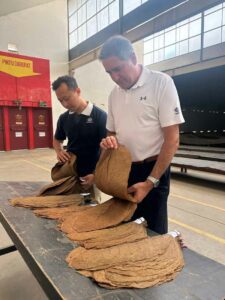
After opening, the leaves are stacked into fermentation piles that can reach up to several meters in height and weigh up to 12 tons. During fermentation, which can last several months, enzymes and microorganisms break down organic compounds within the tobacco leaves, triggering various biochemical changes. The combination of temperature, humidity and pressure causes the leaves to obtain the desired color, flavor and aroma. To achieve uniform fermentation, the piles must be regularly “turned”—restacked from the ground up to ensure an even distribution of moisture and temperature, along with proper aeration. Timely restacking is crucial because if the temperature in a bale rises too high, it will turn the tobacco black and cause it to fall apart.
The labor-intensive nature of their operations causes tobacco processors’ payrolls to swell significantly during the season. While Indonesian wages are low by international standards, they have been rising rapidly. In 2023, the minimum wage in the Jember area jumped by 8.5 percent compared with an overall inflation rate of 3.08 percent nationwide. The industry expects another hefty minimum wage increase, of approximately 10 percent, in 2024.
The rising cost of labor presents a challenge for the cigar leaf companies because few of their activities lend themselves to mechanization. Tobacco farm plots tend to be too small and too dispersed to effectively deploy farm equipment, and no machine can mimic the fine motor skills required to sort, open and stack the delicate tobacco leaves yet. Universal did recently purchase a new seeding machine, however. Due to more accurate seed placement and other improvements, the new device offers significantly higher germination rates than the company’s existing seeder.

Taking Responsibility
Like their counterparts elsewhere, leaf dealers in Indonesia are investing heavily in environmental, social and governance (ESG) projects. AOI, for example, has been fitting its contracted farmers’ curing barns with new gasifying systems that burn biomass rather than wood. Not only does this reduce pressure on Indonesia’s forest cover, but it is also more efficient because biomass has a higher calorific value than wood. On a cost-per-kilo basis, it’s about 30 percent cheaper than using wood, according to Green.
This year, AOI and its processing joint venture partner ITS have planted 5,000 trees in cooperation with a local organization, Trees4Trees. The project aims to plant 60,000 trees by 2030. In addition, AOI installed four deep water wells and tanks, assisting almost 300 families on Madura Island. The company intends to expand the project into other AOI regions where water scarcity is common through the dryer months.
The company has also engaged professional storytellers to educate the communities where it sources tobacco about the importance of health and safety, fair treatment and avoiding child labor. To date, the program has reached almost 20,000 participants. AOI aims to maintain an audience of more than 5,000 participants annually. In Jember, meanwhile, the tobacco sector is building playgrounds and supporting schools to keep children out of the fields.
The industry has also invested in waste management, which represents a considerable problem in Indonesia, where 40 percent of the country’s 142 million urban residents still lack basic waste collection services. In the Jember region, Universal has helped set up facilities that purchase waste from local communities, reducing litter and offering villagers an additional source of income. The money generated by the waste depots helps pay for the playgrounds, among other projects. Universal also sponsors initiatives that help people in the communities where it operates set up small businesses. The goal, says Schaap, is to make the projects self-sustainable so that they will endure and grow to serve the community as a whole.
Mayangsari recently made a remarkable contribution to tackling the waste problem. A regional superstition that burning disposable diapers brings bad luck to the baby prompted many mothers in the Jember area to dispose of used nappies in rivers, where they would leach chemicals, spread bacteria and cause blockages in waterways, including irrigation canals. By supplying more than 2,000 young mothers in its growing communities with reusable diapers, Mayangsari not only helped decrease diaper waste by more than 300 tons but also reduced the occurrence of diaper rashes, urinary tract infections and, importantly, household expenses. According to Kuitems, the money saved by not having to buy disposable diapers for six months is equivalent to 150 kg of rice, enough to feed two adults for an entire year.
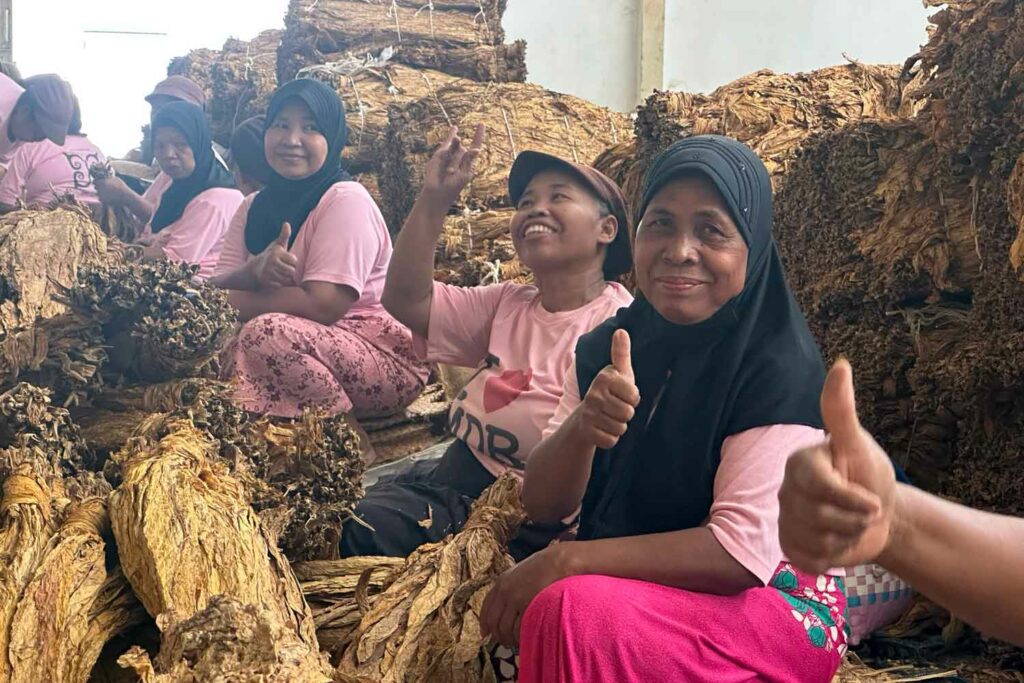
A Tilted Playing Field
While the leaf dealers’ investments in ESG make them good corporate citizens, the business case is not always straightforward. According to the merchants featured in this article, it can be challenging to communicate and recover the added value provided by such projects. Whereas programs in the coffee and cacao business allow suppliers to charge a premium for responsibly sourced products through certification labels, there is no equivalent in the tobacco business. “A smoker cannot tell the difference between a responsibly sourced cigar and another product from its packaging,” says Kuitems.
Another challenge is that not everyone plays by the rules. Leaf dealers that pay minimum wages, forgo harmful crop protection agents and provide their growers with personal protective equipment must compete with players who don’t (and thus enjoy lower operating costs).
This means that responsible companies must work twice as hard as their less conscientious counterparts. “It forces us to operate as cleverly and efficiently as possible,” says Kuitems. While acknowledging the challenges, the merchants who contributed to this piece said they remain firmly committed to their standards—not only because their blue-chip customers insist on it but also because it is the right thing to do. The extra work, they noted, comes with the territory. It’s just one of the ways in which the complex Indonesian leaf tobacco market will keep the traders on their toes.


